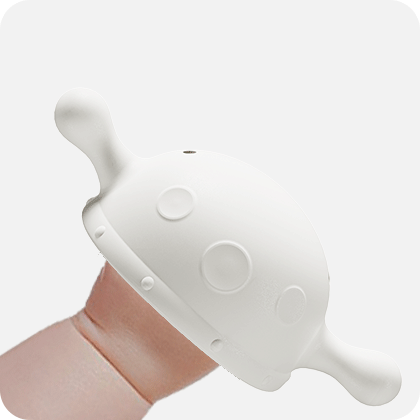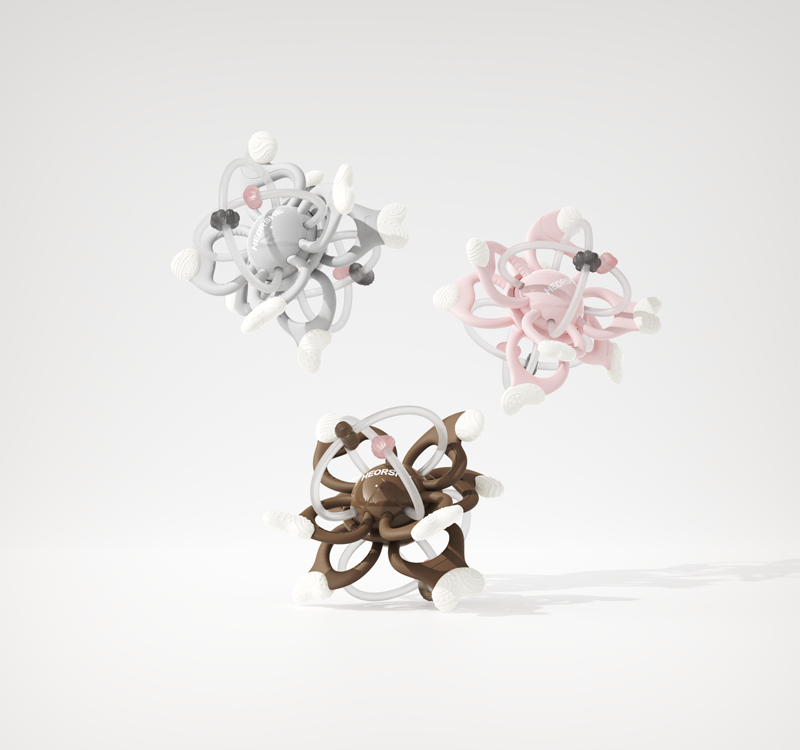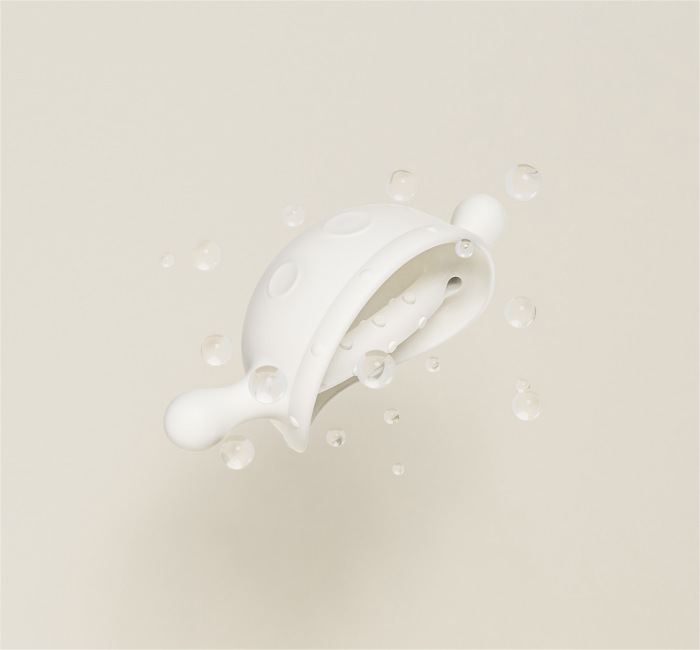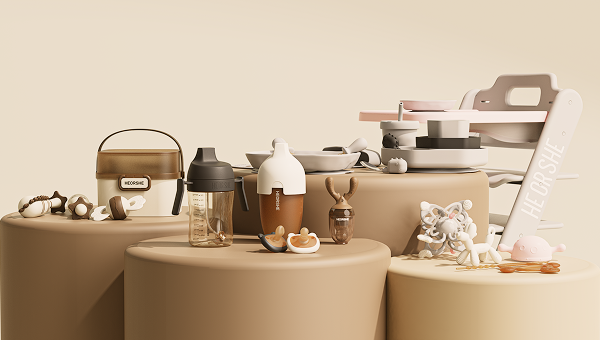Teething is one of the most challenging phases of early childhood—for both babies and parents. As those tiny teeth begin to emerge, your baby may experience discomfort, excessive drooling, and an irresistible urge to chew on anything in sight. Fortunately, cute teethers offer a safe, soothing, and even stylish solution to this natural but often uncomfortable process.
In this comprehensive guide, we’ll explore what makes a teether effective, how to choose a soft teether that’s safe for your child, and the benefits of cute teething toys that engage your baby’s senses while providing much-needed relief.

What is a Teether?
A teether is a baby care item designed to help soothe and relieve discomfort associated with teething. It is typically a small, chewable object made of safe materials that babies can bite on as their teeth begin to emerge. The pressure exerted from chewing on a teether helps reduce pain and inflammation in the gums. Teethers are specifically engineered to fit comfortably in tiny hands and mouths and are a safer alternative to babies chewing on their fingers or household items.
Teethers come in a wide range of designs, from traditional ring shapes to more creative and engaging forms like animal figures or fruits. The main goal is to keep babies comfortable and distracted during this sometimes painful developmental stage, all while promoting healthy oral habits and muscle development in the jaw and mouth.
Why Choose Cute Teethers?
While functionality is essential, the visual and aesthetic appeal of a teether can play a significant role in how engaged your baby is with it. Cute teethers are specifically designed to appeal to your baby’s developing senses—sight, touch, and even taste. When a teether is visually attractive and has playful shapes, babies are more likely to pick it up, hold it, and interact with it regularly.
Cute designs, such as animals, cartoon characters, or miniature versions of fruits and desserts, can make the teething process more enjoyable. For parents, cute teethers are also a win; they look great in photos, are easy to distinguish from other toys, and often make thoughtful gifts for baby showers.
Moreover, many cute teethers are part of broader toy collections, allowing parents to purchase matching rattles, pacifier clips, or plushies for a cohesive aesthetic.

What Makes a Good Soft Teether?
A soft teether is gentle on a baby’s delicate gums but durable enough to withstand repeated biting. High-quality soft teethers are made of food-grade silicone or natural rubber, offering both resilience and flexibility. These materials mimic the feel of skin and help massage sore gums.
A good soft teether should also include various textures—bumps, ridges, and nubs—that provide sensory feedback and help babies find relief in different pressure points. Ergonomic design is another critical factor; teethers should be easy for tiny hands to grasp and manipulate without slipping. This helps in building grip strength and hand-eye coordination.
Additionally, a top-quality soft teether will be free from harmful substances like BPA, phthalates, PVC, and lead. Look for certifications and labels indicating the teether is FDA-approved or complies with international safety standards.
Benefits of Cute Teething Toys
Cute teething toys go beyond simple pain relief. They play a vital role in a baby’s sensory development. The textures, colors, and shapes stimulate various senses, encouraging babies to explore and interact. This engagement boosts their cognitive development and helps them understand cause-and-effect relationships—for example, chewing results in relief.
Some of the major benefits include:
- Pain relief: The main benefit is, of course, reducing teething discomfort.
- Motor skill development: Reaching for, holding, and chewing on teething toys improves hand coordination and oral motor control.
- Visual and tactile stimulation: Bright colors and varying textures help improve sensory processing.
- Emotional comfort: Familiar, soft, and visually pleasing toys can serve as transitional comfort objects.
Cute teething toys can be especially useful in calming babies during travel, mealtime, or before naps, giving parents a helpful tool for soothing.
Materials to Look for in a Safe Teether
Choosing the right material is vital to ensure both safety and comfort. Here are the most common materials found in high-quality teethers:
Food-Grade Silicone
This is one of the most popular materials due to its softness, durability, and safety. It is non-toxic, heat-resistant, and dishwasher-safe, making it a hygienic choice.
Natural Rubber
A slightly softer and eco-friendlier option, natural rubber teethers are biodegradable and often have a pleasing bounce that appeals to babies.
Organic Cotton
Used in plush or fabric-based soft teethers, organic cotton is safe for mouthing and often combined with silicone or wood to create multi-sensory toys.
Wood (Beech or Maple)
Used for its antibacterial properties, wood is sturdy and safe when untreated or finished with natural oils. It is ideal for babies who have already developed some teeth.
Avoid materials containing BPA, PVC, artificial dyes, and synthetic fragrances, as these can be harmful when ingested or chewed.
Popular Styles of Cute Teethers
Modern cute teething toys come in a variety of innovative styles that appeal to both babies and parents:
- Animal-themed teethers: Bears, bunnies, elephants, and sloths are common characters that add a cuddly charm.
- Fruit and food shapes: Think watermelon slices, donuts, popsicles, and avocado halves—visually fun and engaging.
- Character-based teethers: Popular cartoon animals or comic-themed figures turn teething into an adventure.
- Wearable teethers: Necklaces for mom to wear or mittens that babies can chew on safely.
- Multi-sensory options: Teethers that combine wood, silicone, and fabric for diverse textures.
Parents can even find themed teething sets that include matching pacifier clips, bibs, and plush companions.
How to Clean and Maintain Soft Teethers
Since teethers spend a lot of time in babies' mouths, regular cleaning is a must. Here are the best practices:
Silicone Teethers
Wash with warm soapy water or place in the top rack of a dishwasher.
Sterilize by boiling for a few minutes or using a steam sterilizer.
Natural Rubber
Wipe clean with a damp cloth and mild soap.
Avoid prolonged soaking or boiling, as it may degrade the material.
Fabric or Plush
Machine wash on a gentle cycle with baby-safe detergent.
Air dry thoroughly to prevent mold growth.
Wood
Wipe with a damp cloth, optionally using a solution of vinegar and water.
Avoid soaking; oil with food-grade oils like coconut or olive oil to maintain finish.
Inspect all teethers regularly for signs of wear, such as cracks or tears, and replace them if damaged.

When Should You Introduce a Teether?
Most babies begin teething between 4 to 7 months of age. However, signs of early teething can appear as soon as 3 months. These signs include:
- Excessive drooling
- Gnawing on hands, toys, or clothes
- Fussiness or irritability
- Swollen, sensitive gums
- Trouble feeding or sleeping
Introducing a soft teether early can help familiarize your baby with the concept and prepare them for future teething phases. Starting early also offers parents a proactive way to comfort their baby before the peak of teething discomfort hits.
Tips for Choosing the Right Cute Teething Toys
Here are some key factors to consider when shopping:
- Material safety: Always opt for non-toxic, BPA-free options.
- Ease of grip: Look for looped handles, lightweight designs, and finger holes.
- Age suitability: Follow manufacturer age guidelines.
- Texture diversity: Different bumps and ridges help massage various parts of the gums
- Cleaning convenience: Choose materials and designs that are easy to sanitize.
- Design appeal: Babies are more likely to use teethers that are visually engaging.
Also, consider if you want a teether that can be chilled or clipped onto a stroller or baby carrier for convenience.
Frequently Asked Questions
Are cute teethers safe?
Yes, as long as they are made from baby-safe, non-toxic materials and have no small parts that can be swallowed.
Can I refrigerate a soft teether?
Many silicone-based teethers can be refrigerated (not frozen) to provide cooling relief. Always check the label.
What if my baby rejects all teethers?
Try varying shapes, sizes, and temperatures. Some babies prefer fabric, others silicone. Trial and error is key.
Are teethers necessary?
While not mandatory, they provide significant comfort, promote oral development, and offer sensory enrichment.
Conclusion
Teething is an unavoidable yet manageable milestone. With the right tools, you can help your baby navigate it more comfortably. Choosing the right cute teethers that double as stimulating cute teething toys can make a huge difference. They not only offer relief but also support your baby’s developmental journey.
Whether you choose a soft teether made of food-grade silicone or a plush animal-shaped toy, remember that quality and safety should always come first. With thoughtful selection and proper care, these little tools will ease the teething process and add a touch of fun and style to your baby's day.


